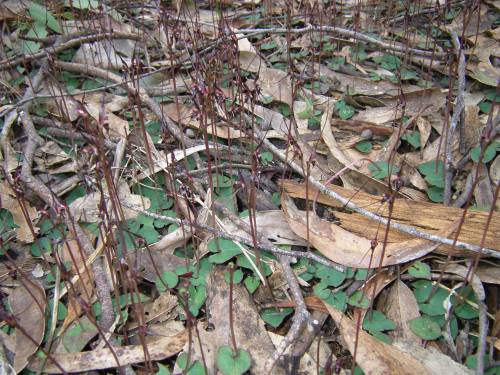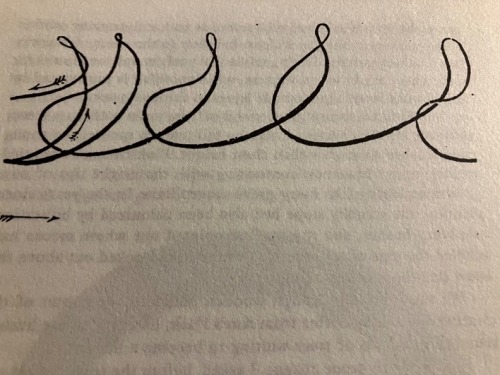I Learned That The Fruit Of The [mesquite] Tree Was One Of Many In Our Landscape That Had Evolved To
I learned that the fruit of the [mesquite] tree was one of many in our landscape that had evolved to be eaten by the giant mammals who disappeared from this continent not long after humans showed up, one of those factual nuggets that punctuate a truth about the deep history of the Anthropocene in ways reading alone cannot. […] [W]e will soon need to learn not to take for granted things like the wild food that goes uneaten due to the absence of the animals whose extinction our dominion coincided with.
I wonder what kind of cake we will make, if we have to make it from the fruit of the old tree that grew up in the brownfield.
Christopher Brown, A Natural History of Vacant Lots: Field Notes from Urban Edgelands, Back Alleys, and Other Wild Places (2024)
More Posts from Calystegia and Others
Invasive Species and Xenophobia
Invasive species are complicated! People have a lot of feelings about them, positive and negative. Are plants that move "invaders" "colonizing", "immigrants", "citizens"? What does it mean to kill species that are from somewhere else? What if that species legitimately makes a poor neighbor and causes extinctions in other, native species? This complex, culturally-loaded issue is a foundational issue behind a lot of plant conservation and restoration.
This is a juicy and still actively disputed topic! The Guardian recently had a big article on colonialism in Botany, (tbh her views are dated and reductive, imo) and it’s come up again this week, to much hostility (cw: reddit). Yes, my region's native plant restoration came from literal nazis, but also, the impacts of some invasive species are real, not figments of a racist imagination. How do we balance these issues? What does ethical invasive management look like?
Since it’s such a juicy topic, I wanted to offer a few fun readings to share:
The Native Plant Enthusiasm: Ecological Panacea or Xenophobia?, Gert Gröning and Joachim Wolschke-Bulmahn, 2004, Arnoldia.
THE CLASSIC 20th century German nazis and native plants paper. Made a huge splash when it came out, and you will still encounter people who paint all native plant stuff with this brush. Summary: yeah the nazis loved their native plants and used them as part of their conquering process. Also, the first prairie plantings ever, located in Chicago, were done by a racist probable-nazi for racist reasons, full stop. I’ll let him speak for himself: “The gardens that I created myself shall… be in harmony with their landscape environment and the racial characteristics of its inhabitants. They shall express the spirit of America and therefore shall be free of foreign character as far as possible… the Latin and the Oriental crept and creeps more and more over our land, coming from the South, which is settled by Latin people, and also from other centers of mixed masses of immigrants. The Germanic character of our race, of our cities and settlements was overgrown by foreign character. The Latin spirit has spoiled a lot and still spoils things every day.” - Jens Jensen
Botanical decolonization: rethinking native plants, Tomaz Mastnak, 2014, Environment and Planning D: Society and Space
Rather than viewing native plant plantings as an act of racially-pure occupation, Mastnak positions native plants in California as a decolonization of the sub/urban lawn. Uses a lot of quotations from 16th century English philosopher Francis Bacon, and is heavy on the philosophical musings.
From killing lists to healthy country: Aboriginal approaches to weed control in the Kimberley, Western Australia by Bach et al., 2019, Journal of Environmental Management.
This paper talks through some of the native vs invasive debate, and offers a different perspective on how to approach to plant invasive management based on cultural relations, rather than country of origin or behavior.
Beyond ‘Native V. Alien’: Critiques of the Native/alien Paradigm in the Anthropocene, and Their Implications, Charles R. Warren, 2021, Ethics, Policy, & Environment
DENSE but thorough, if you want to follow the entire history of the native/invasive debate, this has you covered. The most interesting stuff, in my opinion, is the discussion of invasive denialism, IE: the impasse of “You’re just being racist!” Vs “You know nothing about ecology!” I recommend the Discussion, which starts on page 13.


Acianthus caudatus.
Orchidaceae: Diurideae.
By Start with the Leaves. [x]

Ragwort

The consequences of allowing taxonomy to falter are significant. Every year, botanists around the world discover around 2,000 new plants, a number that has held fairly steady since 1995, suggesting that there are still tens of thousands of plants to introduce to science. Three-fourths of the new species are already threatened with extinction. If we don’t have taxonomists to describe these species, we stand little chance of saving them — or their habitat.
With the threats of climate change, nuclear war and artificial intelligence bearing down, the act of simply itemizing our plants can seem trivial. But when I asked Art Gilman, a botanist, taxonomist and author of “The New Flora of Vermont,” why it matters, he paused in the careful way of a scientist. He gave no answer about curing cancer or revolutionizing food systems. “We lose the opportunity to know our world,” he said, finally.






FINALLY the buttonbush pictures. These are just about the coolest flowers in the world. And they grow all over the riverbanks and are swarmed with pollinators right now it’s amazing. My mom and I couldn’t canoe 10 feet without spotting another one and of course we couldn’t not check out every single one.


Erica pyramidalis, the pyramid heath, was a species of Erica (also sometimes known as heath/heather) that was endemic to the city of Cape Town, South Africa. Erica is a genus of roughly 857 species of flowering plants in the family Ericaceae. The Pyramid Heath was restricted to what today is the city of Cape Town in the Western Cape Province, South Africa.The species disappeared due to the destruction of its habitat by the expanding city, and, despite the fact that the species was even cultivated for some time it is now considered extinct.
-
 calystegia reblogged this · 4 months ago
calystegia reblogged this · 4 months ago -
 factsbybriggs liked this · 5 months ago
factsbybriggs liked this · 5 months ago -
 pneumaticpresence reblogged this · 5 months ago
pneumaticpresence reblogged this · 5 months ago

icon: Cressida Campbell"I know the human being and fish can co-exist peacefully."
35 posts






